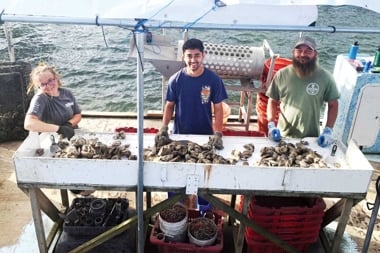Pau D'Arco

Pau Darco, Taheebo, Lapacho, Ipe Roxo. Will the real miracle herb please stand up?
Pau D’arco, Taheebo, Lapacho, Ipe Roxo. Will the real miracle herb please stand up?
Actually, all these names belong to one herb. Pau D’arco is the name of a tree that is native to South America. The varieties most frequently used by healers are the Tabebuia heptaphylla of Brazil, and the Tabebuia impetinginosa of Argentina. The healing constituents are found only in the inner bark of the Pau D’arco tree.
Used as a whole herb, tea, powder, tincture or in capsules, Pau D’arco has a toxicity that is negligible–reported as 1/10 that of coffee. Initial use of the whole inner bark might occasionally result in a day or two of mild nausea, as Pau D’arco is a powerful blood cleanser.
Unfortunately, the short history of scientific studies regarding an isolated extract of Pau D’arco–lapachol, one of Pau D’arco’s so-called "active" ingredients, has cast an unwarranted shadow on the herb.
Back to the point–these medical studies proved lapachol capable of eliminating cancerous tumors. In using this "active ingredient," bereft of the naturally occurring synergists present in the whole herb (think of these as fellow team players), researchers found that toxically high amounts of the "active" ingredient were needed to obtain the cancer-killing benefits. Nausea, vomiting, and a slowdown of blood coagulation were caused by high doses of this "star player" lapachol. Thankfully, these side effects ceased when the volunteers stopped taking the extract. As a result of these side effects, studies using lapachol for cancer treatment were summarily stopped.
Compare the active ingredient of any given herb to the star of a winning sports team. Is one star alone the only real player of a successful team? The pharmaceutical perspective says yes. Hire one player who can be controlled–instead of the whole team with its multiple interactions.
The Whole Truth
Another study–unpublished–used crude whole herb extracts of Pau D’arco. Researchers found that these herbal extracts stimulated the activity of macrophages (immune system workers) taken from mice. The herbal extract also killed mice cancer cells both in culture and in the mice. The Pau D’arco extract also reduced the occurrence of lung metastases in mice following surgery to remove these cancer tumors. Researchers felt that the Pau D’arco extract directly stimulated the immune system. No side effects were mentioned.
As yet, this study is unconfirmed by other investigators. Despite the numbers of individual testimonials and the few promising studies regarding the whole herb use of Pau D’arco, cancer research institutes in Canada and the US have lost interest in further investigation of the cancer-fighting properties of this herb.
The inner bark of Pau D’arco, taken as a whole herb, holds far fewer toxic hazards than the consumption of coffee. For 30 years, there have been many success stories from Canadian and American consumers who have used this herb for a wide variety of illnesses, including candida yeast infections, compromised immune systems, AIDS and cancer.
These stories of regained health may be news to us, but the miraculous cures attributed to Pau D’arco are everyday fare to South Americans and their healers. For centuries, South and Central Americans have been using this herb successfully for an amazing range of disorders: arthritis, snakebites, lupus, infectious diseases, wound healing and cancer.
But the list doesn’t stop there. South American healers have also used this herb for cancer and a variety of other disorders (like malaria). It is reportedly used in folk medicine for Hodgkin’s disease, leukemia and cancers of the pancreas, esophagus, "head," intestines, lung and prostate. South American physicians and herbalists alike recommend the use of Pau D’arco as an adjunct to cancer therapy. Their clients drink the tea while undergoing radiation, chemotherapy or surgery. Caribbean healers use the leaf and bark for backache, toothache, sexually transmitted diseases and even as an aphrodisiac. Anecdotal success stories of Pau D’arco use abound in both South and North America.
Healing is Believing
Pau D’arco reportedly contains elements that make it a powerful antibiotic, with virus-killing properties. That would certainly support the great numbers of success stories of those who have used Pau D’arco in resolving warts, tonsillitis, flus or colds. North Americans use this herb for an even greater variety of disorders. Consider this list: athlete’s foot, candida yeast infection, cancer, AIDs, endometriosis, tonsillitis, flu, cold, leucorrhea, multiple sclerosis, lupus, fibromyalgia, phlebitis, warts, fatigue, sexually transmitted diseases and blood purification.
Today, in Canada, there are household cleaning products on the market containing Pau D’arco. These solutions are used to disinfect counters and sinks. Pau D’arco is in these formulae due to its powerful antimicrobial action.
Is Pau D’arco a herb to defeat cancer? Anecdotal use by cancer survivors certainly suggests so. Scientific studies have verified that Pau D’arco has anti-tumor fighting action. But there have also been studies done that demonstrate that most of the Pau D’arco on the market contains little or no actual inner Pau D’arco bark. If you are considering using this herb for its protective potential, ensure that the Pau D’arco you are buying is from a reputable source. Uninformed, or, perhaps, unscrupulous collectors gather the outer bark (and not the inner bark) of the tree–or else, the bark of a completely different tree.
Although there are only a few scientific studies (most done over 20 years ago) that verify the anti-tumor, cancer-fighting, anti-viral, anti-fungal and anti-microbial actions of this South American herb, those who have benefited from its use believe that personal experience is more powerful than medical documentation. If you are considering using this herb, know that the real Pau D’arco has the potential for great good, with minimal potential for harm. The very least this herb might do for you is act as a tonic and blood cleanser.




